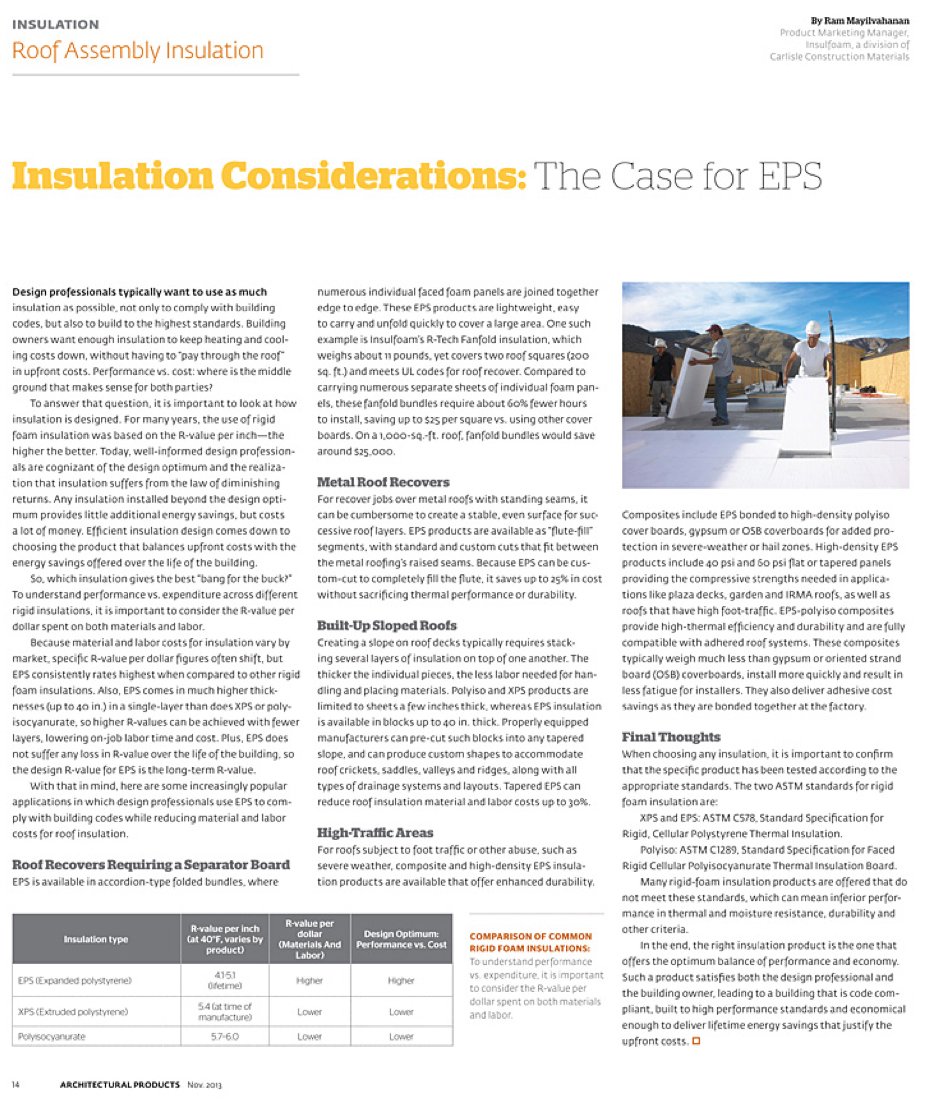Originally printed in Architectural Products Magazine, On Spec, Insulation, Nov 2013
Design professionals typically want to use as much insulation as possible, not only to comply with building codes, but also to build to the highest standards. Building owners want enough insulation to keep heating and cooling costs down, without having to ‘pay through the roof’ in upfront costs. Performance vs. cost: where is the middle ground that makes sense for both parties?
To answer that question, it is important to look at how insulation is designed. For many years, the use of rigid foam insulation was based not the R-value per inch – the higher the better. Today, well-informed design professionals are cognizant of the design optimum and the realization that insulation suffers from the law of diminishing returns. Any insulation installed beyond the design optimum provides little additional energy savings, but costs a lot of money. Efficient insulation design comes down to choosing the product that balances upfront costs with the energy savings offered over the life of the building.
So, which insulation gives the best ‘bang for the buck?’ To understand performance vs. expenditure across different rigid insulations, it is important to consider the R-value per dollar spent on both materials and labor.
Because material and labor costs for insulation vary by market, specific R-value per dollar figures often shift, but EPS consistently rates highest when compared to other rigid foam insulations. Also, EPS comes in much higher thicknesses (up to 40 in.) in a single-layer than does XPS or polyisocyanurate, so higher R-values can be achieved with fewer layers, lowering on-job labor time and cost. Plus, EPS does not suffer any loss in R-value over the life of the building, so the design R-value for EPS is the long-term R-value.
With that in mind, here are some increasingly popular applications in which design professionals use EPS to comply with building codes while reducing material and labor costs for roof insulation. Read full article (pdf) to learn more about:
- Roof recovers requiring a separator board
- Metal roof recovers
- Bilt-up sloped roofs
- High-traffic areas
- Comparison of common rigid foam insulations
“In the end, the right insulation product is the one that offers the optimum balance of performance and economy. Such a product satisfies both the design professional and the building owner, leading to a building that is code compliant, built to high performance standards and economical enough to deliver lifetime energy savings that justify the upfront costs.”


